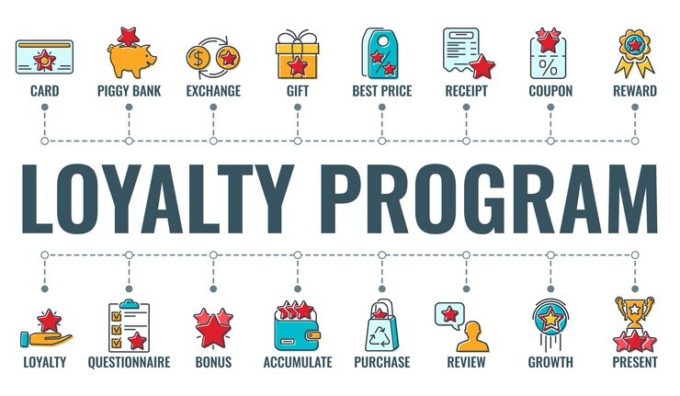Competition is fierce in the business world and success often depends on a company’s ability to motivate and engage both employees and external partners. This is where incentive programs come into play.
Incentive programs are a strategic tool used by organizations to inspire and reward individuals for their performance, ultimately driving success and achieving business goals.
These programs have become integral in cultivating a motivated workforce, improving partner relationships, and enhancing overall business performance.
In this article, we will explore the diverse aspects of incentive programs and how they impact business relationship management.
Understanding Programs

Incentive programs are structured systems designed to encourage specific behaviors, increase productivity, and enhance loyalty among employees and external partners.
These programs typically involve offering various incentives, such as monetary rewards, recognition, gifts, or opportunities, to those who meet or exceed predefined goals and expectations.
The Programs Include

Motivating Individuals
Incentive programs are aimed at motivating people to achieve their best. Whether it’s sales representatives, channel partners, or employees, these programs inspire participants to push their boundaries and consistently deliver outstanding results.
Driving Performance
By aligning incentives with performance metrics, companies can encourage participants to meet and surpass their targets. This directly contributes to the organization’s success and profitability.
Building Loyalty and Commitment
Incentive programs help establish a strong sense of loyalty and commitment among participants. This can improve employee retention rates and foster enduring partner relationships.
Fostering Collaboration
Incentive programs can encourage teamwork, collaboration, and communication within organizations, making them an invaluable tool for enhancing business relationship management.
Types of Incentive Programs

Incentive programs come in various forms and can be tailored to meet the specific needs of an organization. Some of the most common types include:
1. Employee Incentive Programs
These motivational initiatives foster a positive work environment and encourage employees to strive for excellence. Sales commission plans, bonuses, and profit-sharing schemes are financial incentives that directly link individual or team performance to tangible rewards. Such monetary benefits acknowledge employees’ hard work and provide a clear incentive structure that aligns with organizational goals.
Recognition awards, on the other hand, go beyond monetary compensation, offering a symbolic acknowledgment of employees’ achievements. These accolades can range from public acknowledgment in team meetings to more tangible symbols of appreciation, such as certificates or plaques. Introducing a glass trophy into the mix adds a touch of elegance and permanence to the recognition process. It also serves as a lasting testament to an individual’s or team’s accomplishments, becoming a source of pride and motivation.
Incorporating diverse forms of recognition creates a multifaceted approach to employee appreciation. This caters to varying preferences and reinforces the idea that individual or collaborative contributions are valued and celebrated within the organizational culture. As employees proudly showcase their glass trophies, they become a symbol of personal achievement and the company’s commitment to recognizing and rewarding excellence. This holistic approach to motivation contributes to a more engaged and inspired workforce, fostering a positive cycle of continuous improvement and success.
2. Channel Partner Incentive Programs
These programs aim to incentivize and strengthen relationships with distributors, resellers, and other external partners. Channel partners can receive incentives like discounts, rebates, co-op advertising funds, or loyalty rewards for meeting sales targets and other performance criteria.
3. Customer Loyalty Programs
By rewarding customers for their repeat business and loyalty, organizations can build strong, lasting relationships and foster brand advocacy. Examples include loyalty points, discounts, exclusive access, and VIP treatment.
4. Employee Wellness Programs
These programs promote healthy lifestyles and well-being among employees, leading to higher job satisfaction and productivity. Incentives may include gym memberships, wellness workshops, and health insurance discounts.
5. Referral Programs
Encouraging employees and customers to refer to new businesses can be a powerful growth strategy. Incentives often involve cash rewards, discounts, or exclusive gifts for successful referrals.
The Impact on Business Relationship Management

Effective partner relationship management (PRM) is a critical aspect of many businesses, especially those operating in a complex network of suppliers, distributors, and resellers.
Incentive programs play a significant role in improving and maintaining these relationships. Here’s how they impact PRM:
Enhanced Communication and Collaboration
Programs foster communication and collaboration between a company and its partners. By providing partners with clear goals and expectations, businesses create a shared purpose that strengthens the working relationship.
Increased Partner Engagement
Partners are more likely to be engaged and committed when they see direct benefits and incentives tied to their performance. This engagement leads to increased sales, better product support, and a stronger overall partnership.
Improved Sales and Revenue
Channel partners, in particular, can significantly benefit from programs tied to sales performance. These programs can boost motivation, drive higher sales figures, and lead to increased revenue for both the company and its partners.
Data-Driven Insights
Many programs rely on data and analytics to track performance and determine reward distribution. This data can be invaluable for both the company and its partners, helping them make informed decisions, refine strategies, and adapt to market changes.
Long-Term Partnerships
When partners feel valued and appreciated through programs, they are more likely to commit to long-term relationships. These partnerships can evolve into strategic alliances that benefit both parties over time.
Best Practices in Implementing Programs

The successful implementation of an incentive program requires thoughtful planning and a clear understanding of its objectives. Here are some best practices to ensure the efficacy of these programs:
- Clear Objectives: Before rolling out any program, it’s vital to have clear objectives. Are you aiming to boost sales, improve customer loyalty, or encourage collaboration? Your program should be designed around these specific goals.
- Tailored Incentives: Not all rewards will motivate everyone equally. Understand your audience and tailor the incentives to what they value most, whether it’s monetary rewards, personal development opportunities, or other unique benefits.
- Transparency: Ensure that the criteria for rewards are transparent and easily understood. This avoids potential confusion or feelings of unfairness among participants.
- Regular Feedback: Keep the participants informed about their performance. Regular feedback can motivate individuals to improve and can also be an avenue to address any concerns.
- Review and Revise: Like any other business strategy, it’s crucial to periodically review the effectiveness of your programs. Collect feedback, analyze results, and make necessary adjustments to ensure they remain relevant and effective.
- Celebrate Achievements: Celebrating successes, big or small, can create a positive culture. Recognize and applaud achievements to encourage continued effort and dedication.
- Stay Updated: Business landscapes, employee preferences, and market dynamics change over time. Keeping abreast of the latest trends and being flexible in adapting your incentive programs will ensure their long-term success.
- Inclusivity: Ensure that incentive programs are inclusive and do not unintentionally favor a particular group. This promotes fairness and ensures all participants have an equal opportunity to benefit.
- Legal and Ethical Considerations: Ensure that your incentive programs comply with relevant laws and uphold the highest ethical standards. This protects the company’s reputation and ensures long-term sustainability.
- Technology Integration: Modern businesses can benefit from integrating technology into their incentive programs. This can streamline the process, provide real-time tracking, and allow for a more personalized experience for the participants.
Further Implications
The ripple effects of a well-implemented incentive program extend beyond just the direct participants. A motivated workforce can lead to increased customer satisfaction.
Happy channel partners can become brand ambassadors, further amplifying a company’s reach. By continuously investing in and refining incentive programs, businesses not only enhance their relationship management but also solidify their position in the marketplace.
In today’s dynamic business environment, where retaining talent and nurturing partnerships is as crucial as acquiring them, incentive programs offer a strategic advantage. When executed correctly, they can be the differentiating factor that propels a company to new heights.









